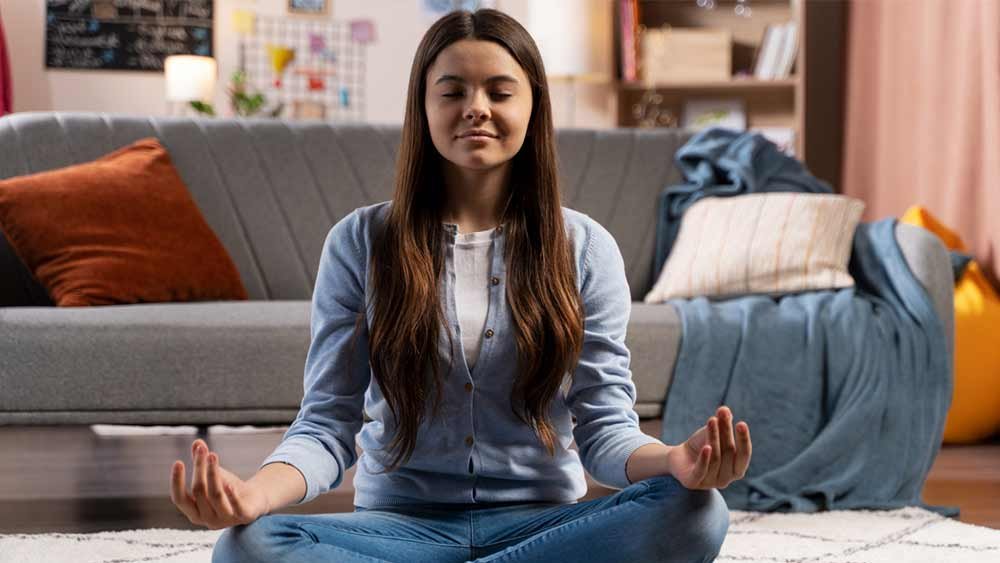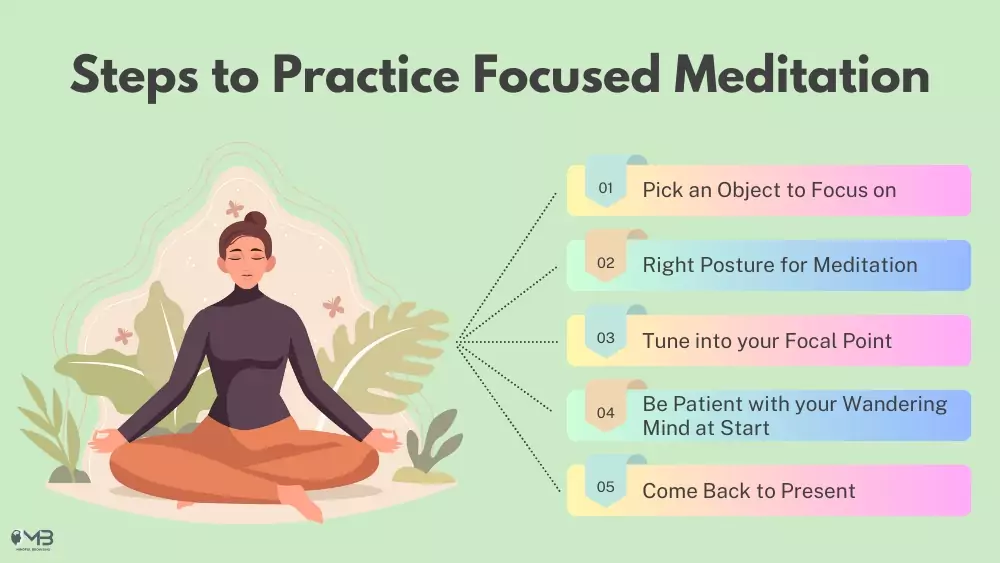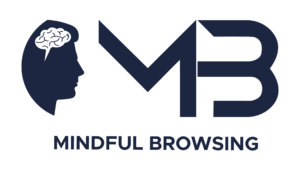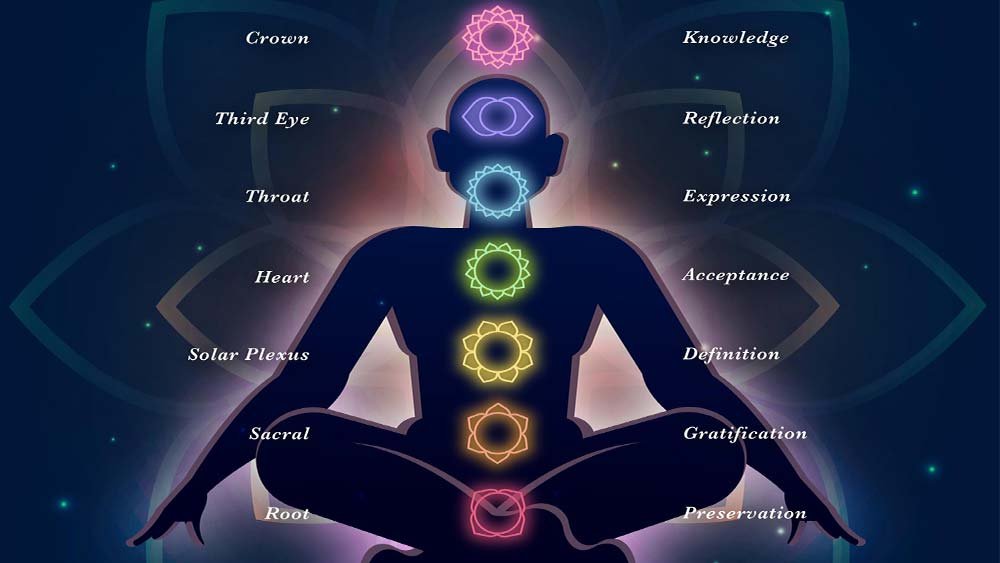
Did you know that once you get distracted, it takes you, on average 23 mins and 15 seconds to regain focus?
That crazy statistic came out of a research study done at University of California Irvine.
So that means that quick scroll or text response is not going to last just 30 seconds!
Then how do you regain your focus faster and more easily? Simply by incorporating practices like Focused Meditation into your daily routine!
What Is Focused Meditation?

Focused Attention Meditation (FAM) which is also known as concentration meditation, is a type of mindful meditation practice where you intentionally bring your attention to a particular focal point or object rather than trying to empty your mind. This is a really great meditation practice for a beginner to re-build your concentration.
Benefits of Focused Meditation:

One of the main benefits of FAM is that it can help you improve your concentration and increase your attention span. A Harvard research study showed that 47% of the time thoughts about past events or future anxieties constantly occupy our minds. Practicing focused meditation can empower you to stay anchored into the present, thereby enhancing your focus and driving productivity throughout the day.
Also Read: How to Block Out Noise Mentally for Peace and Clarity
Other Benefits Include:
- Enhanced Problem-Solving Skills: Focused meditation improves your working memory, problem-solving, and decision-making skills. A study done on different meditation techniques also showed that concentration meditation improved participants’ convergent thinking skills, which is their ability to use accuracy, logic, and stored information to find a quick solution to a problem.
- Equanimity: This type of meditation helps you to process and observe your feelings without getting stuck on them. It therefore, builds your equanimity muscle and teaches you how to regulate your emotions so that you don’t overreact in challenging or high-pressure situations.
- Stress Management: A morning meditation practice can set you up for a productive day by helping you gain control of stressful thoughts and an overthinking mind.
- Amplifies Self-Awareness: Focus meditation increases self-awareness, which results in increased confidence in your own decision-making skills due to the ability to see the whole picture.
- Self-Regulation: Focus based meditation empowers you to better regulate your own emotions and feelings, increases resiliency, and even improves sleep, all of which result in better stress management, increased focus, and better decision making.
How to Practice Focused Meditation?

Focused Meditation is what it sounds like; meditating on a particular focal point. Here are some tips on how to practice FAM.
Pick an Object to Focus on:
The only way to maintain a regular meditation practice is to enjoy it. So pick a focal point to focusing on during meditation, whether it’s visual, auditory, or kinesthetic. Some of my favorite points of concentration include the flame of a candle, a repeating sound like singing bowls, affirmations, and mantras. You can also focus on your breath, which is the most common practice. Try them all and pick what works for you.
However, one common challenge people often face is they struggle to stay focused. The solution is simple: eliminate the following habits from your daily life to boost your concentration ability. These include:
Right Posture for Meditation:
You can sit cross-legged or sit upright with your feet flat on the ground. Feel free to lie down if that works better. Relax your body, releasing any tension that you can from your shoulders, face, and jaw.
Tune into your Focal Point:
For the purposes of this exercise, I will choose breath but this works with anything. Bring awareness to your breath without changing anything. The intention here is to experience the breath without changing it or judging it. Pay attention to your breath. Notice the sound of every inhale and exhale. Notice where you feel it in your body.
Maybe you feel it at the tip of your nose or in your chest or down in the belly. What is the texture of the breath? Is it short and sharp or deep and long? Is it smooth or is it jagged? Notice the temperature of the breath. Pay attention to every sensation alongside the breath.
Be Patient with Your Wandering Mind at Start:
Your mind will wander to your to-do list. It’s natural! Don’t shame or guilt yourself for it. Don’t feel like you “did it wrong” or that it was incomplete. Don’t get frustrated by it. You’re human. It’s human to have your mind wander! If you start planning your day and what you’re going to cook, just observe the thoughts floating by like they are clouds.
Try not to attach to anyone’s thoughts. Just observe it without judgment and come back to focusing on your object. If your mind keeps wandering, label the thought so it feels like an action then come back to breathe. You can label the thought as ‘memory’, ‘thinking’, ‘planning’ etc.
Come Back to Present:
Take your time to come back to the present. When you’re done with your meditation, slowly wiggle your fingers and toes and gently open your eyes, if they were closed. Take a second to notice how you’re feeling overall without launching into your day.
Additional Tips to Stay Focused:
- Session Time: Start with a shorter session. 5 minutes is a great length for beginners and you can work your way up to 10-15 minutes.
- Flex the Muscle: Meditation is a muscle like anything else! You wouldn’t go to the gym for the first time and try to lose 100 pounds or quit after 2 days because you don’t see toned arms yet. Practice FAM daily starting with 5 mins and build it up. It will get easier to stay focused for longer periods of time. Remember to have patience and compassion with yourself through this process.
- Build a Routine: Morning, in my opinion, is the best time to meditate. So create a morning routine. Do a challenge month and commit to it for every day that month. It takes 21-30 days to build a habit, so doing this will help you build a meditation practice you can’t live without!
Conclusion:
Meditation has been a powerful tool in my own life. So much so that in addition to being a coach, I trained as a yoga teacher and a breathwork facilitator. Meditation has the ability to change your life too.
Related: What Is Kundalini Yoga? Origin, Benefits, and Dangers







